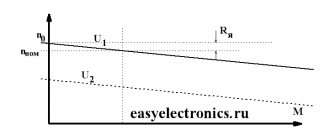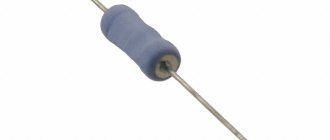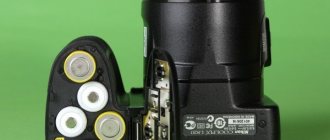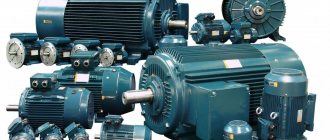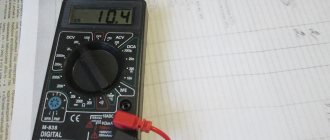Human life is closely connected with the use of electronic devices. The latter operate from a cord, powered by the mains, but there are also portable wireless products. They require a power source - this can be a rechargeable battery or regular disposable batteries. There are many energy consumers, and they run on batteries that differ in shape and characteristics. There are hundreds of types of batteries on sale, so it’s a good idea to know their classification.
Battery types differ in size, shape, composition and other characteristics.
Classification of batteries by size
The sizes and shape (standard size) are different, and this is the easiest way to distinguish products.
In this case, the chemical composition may be the same. Types of batteries by size: Classification by size.
- A. A cylindrical product with a height of 50 mm (including the contact surface) and a diameter of 17 mm. Today it is practically not used;
- AA. Also in the shape of a cylinder, another name is “finger”. Height – 50.5 mm, diameter – 14.5 mm. Used to power: remote controls, photographic equipment, flashlights, other lighting devices, etc.;
- AAA. It can be called “little finger”, as it is similar in shape to AA, only smaller. Height – 44.5 mm, diameter – 10.5 mm. It is used to power devices with low current consumption: remote controls, toys, FM radio, audio players, etc.;
- AAAA. Height – 42.5 mm, diameter – 8.3 mm. Occurs infrequently, mainly in devices with low current consumption, for example, tablet styluses;
- B. Height – 60 mm, diameter – 21.5 mm. It is used in dosimeters and chemical reconnaissance devices. Not relevant in everyday life;
- C. “Thumbelina” or “esque”, 50 mm high and 26 mm in diameter. In the USSR it was designated as 343. This size is suitable for powering: toys, flashlights, FM radio, musical instruments, etc.;
- D. A “barrel”, popular during Soviet times, whose height is 61.5 mm and diameter is 34.2 mm. It powered: radio tape recorders, walkie-talkies, Geiger counters, flashlights, watches, voltmeters, etc.;
- N. Height – 30.2 mm, diameter – 12 mm. Suitable for: laser pointers, microphones, doorbells;
- 1/2AA. Twice as shortened AA battery. Height – 25 mm, diameter – 14.5 mm;
- Crown. Usually this is a battery consisting of 6 other batteries, for example, AAAA size. A characteristic feature is a voltage of 9 V.
There are also miniature batteries, the diameter of which is 4.8 - 11.6 mm, and the height is up to 5.4 mm. Because of its flattened shape, the name “tablet” or “coin” came about. Typically used in wristwatches and other compact devices.
Distribution by form
Cylindrical batteries are the most common, but disk products are no less common. The classification according to form is as follows:
Classification by shape.
- R. From the English word “Round” - a round element. These are cylindrical models and “tablets”;
- P. Not round, rare;
- F. Flat, having a layer-by-layer structure;
- S. They look like a rectangular or prismatic platform.
Some products are available in every store, while others have to be looked for. Despite the abundance of options, they are classified according to standards. AA, AAA, B, C - the American standard, more familiar, so they usually adhere to it.
What current to charge AA batteries - Trowel
Battery designation
How are AA batteries designated in different classifications:
This is an ANSI classification that reflects only physical dimensions, not composition.
What kind of lighting do you prefer?
Built-in Chandelier
Rechargeable AA batteries are marked according to their chemical composition (type of electrolyte). Currently, this designation is becoming more popular because the name is more informative.
If we take the first name, it is deciphered as follows: the first letter indicates the chemical composition, L indicates that the electrolyte in this battery has an alkaline composition, S - silver - zinc, C - lithium; R – has a cylindrical shape, F – flat, that is, a crown; 23 are the overall dimensions of the element. 17x50 mm is the size for code 23.
If the designation begins with the second letter, this means that the electrolyte has a saline composition; if the first number is, it shows how many parallel connections there are in this element.
Types by chemical composition
Depending on what the batteries are made of, according to the international IEC standard, they are marked as follows:
- R—salt;
- LR - alkaline;
- SR - silver;
- CR - lithium;
- PR - zinc air.
Each type of battery has pros and cons.
Salt
They are easy to distinguish by price, because they are the cheapest. The market includes Sony, Toshiba. They are advanced manganese-zinc batteries. It is advisable to use it in devices with low voltage consumption: watches, scales, remote controls.
They discharge quickly and cannot be recharged. During prolonged use, the galvanic cell may leak. At sub-zero temperatures, salt batteries stop working. Despite many shortcomings, this product is in demand on the market.
Alkaline (alkaline)
Galvanic cells of this type first appeared in 1964. They were then produced by Duracell.
If we consider all chemical food sources, alkaline ones are now the most in demand. The cathode material is zinc, and the anode is manganese dioxide. Alkaline electrolyte – potassium hydroxide (gel-like substance).
We recommend reading: DIY generator voltage regulator relay: diagram
Alkaline battery device.
Compared to salt products, alkaline products are characterized by increased energy intensity and are able to operate at sub-zero temperatures, down to -20°. Their shelf life is 7–10 years, which can be achieved due to low self-discharge. The voltage setting is 1.5 V. The price is a little more expensive than salt ones. There are rechargeable varieties.
Alkaline cells are used for devices with medium or high current consumption: in photographic equipment, audio players, children's toys.
Mercury batteries
Not widely used due to high cost and increased toxicity. After all, they can leak, and mercury is dangerous for humans. But such a galvanic cell can be recharged several times. Although over time its capacity is lost - due to the fact that mercury flows down and collects in drops inside the battery.
The advantages of these products include good uninterrupted operation in harsh atmospheric conditions and a long shelf life.
Nickel-cadmium (Ni-Cd)
Invented at the end of the 19th century in Sweden by engineer Waldemar Jungner.
These are rechargeable power supplies with an anode made of cadmium oxide hydrate and a cathode made of nickel oxide hydrate. The electrolyte is potassium hydroxide, to which LiOH (lithium hydroxide) is added. The shapes are flat, cubic, cylindrical, always with a sealed body.
The voltage is about 1.35 V. Their service life is from 100 to 900 charge-discharge cycles (depending on the design, quality of materials used, operating mode). Lamellar nickel-cadmium batteries used in industry last 20–25 years. Like nickel-salt, they can be stored in a discharged state. A special feature is low resistance, so it does not heat up during charging, even with high currents. It starts to heat up only when the charge is completely restored.
Nickel-cadmium batteries are rarely used for environmental reasons, and then mainly where other systems are not suitable. Usually this is powering devices characterized by high discharge and charging currents.
Nickel-cadmium batteries.
Pros:
- operating temperature range – from -50 to +40°;
- stored unloaded for a long time;
- life time;
- work stably in the cold, without reducing energy intensity (to reasonable limits);
- safe when depressurized, at least they don’t catch fire like lithium ones;
- availability.
Minuses:
- high self-discharge (some models lose 10% per day, others the same amount per month);
- if stored without use for a long time, the charge must be restored according to a certain algorithm;
- due to the “memory effect” they require complete discharge;
- Low energy consumption compared to other batteries.
Cadmium is a toxic material, so some countries have banned the manufacture of Ni-Cd batteries. It is prohibited to dispose of used products - they are handed over to special points for subsequent recycling.
Nickel metal hydride (Ni-Mh)
Nickel metal hydride batteries.
Also, rechargeable batteries are in demand in areas where long-term charge retention is required. They are popular due to their high energy intensity and environmental friendliness of materials, which simplifies disposal.
The cathode is nickel oxide, the anode is a hydrogen metal hydride electrode. They began to be developed in the mid-twentieth century, as a replacement for nickel-cadmium batteries. Today, alloys and metals are being improved, and modern Ni-Mh batteries can withstand up to 2000 charge-discharge cycles.
There are two groups on the market:
- 1500 – capacity 3000 mAh. For devices with high energy consumption in a short period of time: photographic equipment, audio players and other gadgets;
- 300 – 1000 mAh. For those devices where energy is consumed after a time interval: toys, walkie-talkies, navigators and other devices that operate autonomously.
They serve on average 1 – 5 years. The self-discharge characteristic is 30% per month, which is quite a large figure, and at room temperature. Operating temperature – from -20 to +60°.
We recommend reading: Voltage rectifier: operating principle and types
Pros:
- environmental friendliness (fewer harmful substances in the design than analogues);
- increased energy intensity;
- without “memory effect” (does not require complete discharge).
Minuses:
- after 300 charge-discharge cycles, the capacity drops;
- may catch fire;
- increased self-discharge.
These batteries have proven themselves best for devices with high energy consumption in a short period of time.
Lithium-ion (Li-Ion)
The cathode is lithium, the anode is manganese dioxide, carbon monofluoride or other materials. Electrolyte – organic.
Lithium-ion battery device.
Features of these elements: increased energy intensity, shelf life reaching 12 years, low weight, stable voltage.
Lithium batteries are used in powerful devices with long-term operation: photographic equipment, portable speakers, medical equipment, smartphones, etc.
There are also iodine-lithium cells in which lithium serves as a reducing agent and iodine as an oxidizing agent. These are powerful batteries that last a long time and drain slowly.
Also classified as lithium are products that have a solid cathode. The anode material in this case is metal sulfides and oxides. Salt solutions serve as electrolytes. Capacitive batteries that operate in a wide temperature range, but expensive.
Pros:
- compact;
- different voltage parameter;
- shelf life;
- resistant to temperature changes.
Their disadvantage is their high price.
Silver
They work in a similar way to mercury batteries. There is only one drawback - the very high cost. But at the same time, their capacity is 30-50% greater than that of lithium batteries. Silver batteries work well at high and low temperatures and have a long service life.
Zinc air
This type of battery is very sensitive to external factors, such as humidity and air temperature, so they are recommended for use indoors. Positive properties - large capacity and environmental friendliness. Once opened, the packaging can last no more than one month.
The cost of these devices cannot be ignored. Silver, lithium and alkaline batteries are expensive, but they can last for a long time. If they are used correctly, they can pay for themselves several times over, while salt batteries will literally fail in a short time.
- You should also take a closer look at the packaging and battery manufacturer. In most cases, manufacturers always mark the battery housing so that the buyer can determine the type of electrolyte.
- When selecting a battery, it is necessary to take into account that under different loads it will behave completely differently. In addition, the functionality will be influenced by the environment. So in winter, but in the cold, the electrical conductivity of the electrolyte will deteriorate, as a result of which its capacity will also decrease.
- It is necessary to take into account the fact that when batteries are stored for a long time, they can lose about 30% of their initial capacity. Therefore, it is recommended to take a close look at the production date. You should know that domestic manufacturers mark the date of manufacture, and foreign manufacturers indicate the last date of use of the battery.
- It is necessary to carefully inspect the elements of the device to ensure that there are no defects that could reduce the efficiency of operation.
- When selecting power supplies for a specific device, it is necessary to take into account the dimensions of the mounting space for them; it can vary. For example, a remote control will require little finger batteries, and for some player you will have to purchase finger batteries. For electronic scales, hearing aids or other small devices, you will need to buy button batteries. In this case, it is necessary to take into account the markings, thickness and diameter of the “tablet” so that it is suitable for a specific device.
Types of AA and AAA batteries: Ni-Cd, Ni-MH, Li-Ion
According to the chemical composition, AA and AAA batteries are divided into the following types:
- Nickel-cadmium (Ni-Cd).
- Nickel metal hydride (Ni-MH).
- Lithium-ion (Li-Ion).
- Nickel-cadmium AA/AAA batteries are characterized by a relatively small capacity. They have a “memory effect” - a decrease in actual capacity due to incomplete discharge before the charging process begins. If the seal of the housing is broken, Ni-Cd batteries are toxic, so they are not environmentally friendly.
- Ni-MH batteries AA and AAA differ from Ni-Cd in their increased capacity, are environmentally friendly, and are less susceptible to memory effect. Currently, nickel-metal hydride elements have replaced nickel-cadmium elements almost everywhere.
- Lithium-ion batteries AA Li-Ion 1.5v contain two devices in one case: a lithium rechargeable battery with a voltage of 3.7v and a converter from 3.7 Volts to 1.5 Volts. Such Li-Ion batteries are produced specifically to replace AA and AAA 1.5v batteries and are characterized by the absence of memory effect.
Li-Ion battery AA 1.5v Fenix with USB port for charging.
| Element | Diameter D, mm | Length L, mm |
| AA (finger) | 14.5 | 50.5 |
| AAA (little finger) | 10.5 | 44.5 |
Rechargeable AA batteries | Chief mechanical engineer
Each battery consists of a cathode, that is, a positive electrode, an anode, that is, a negative electrode, which are placed in an electrolyte. The electrolyte can be either liquid or dry.
Expert opinion
It-Technology, Electrical power and electronics specialist
Ask questions to the “Specialist for modernization of energy generation systems”
Methods for connecting batteries. Each battery consists of a cathode, that is, a positive electrode, an anode, that is, a negative electrode, which are placed in an electrolyte. Ask, I'm in touch!
What types of C-type batteries are there?
C-type products (cylinder-shaped) are saline, alkaline, and nickel-metal hydride.
C-R14
These are salt power sources and cannot be recharged. They are inexpensive, their voltage is 1.5V. According to ANSI standards they are designated as 14D. They weigh little and have small operating parameters.
We recommend reading: Twisted pair: what is it, crimping diagram
Suitable for equipment with low power consumption - up to 200-400mA. They are recommended to be used only at comfortable (plus) temperatures. In the cold they lose their properties.
C-LR14
Alkaline batteries with a power of 1.5V. Their cost is 2-3 times higher than salt ones. At the same time, their volume is 7-10 times larger, and their service life is five times longer.
14A is the ANSI designation. It weighs a little more than salt products. They can supply power to the device for a couple of days with a power of up to 400-500mA. Or a couple of hours of equipment with a power of up to 1-2A. Their temperature range is much wider.
C-HR14
This product is a nickel metal hydride battery. It can be charged. Has a higher cost than previous models. Has the following parameters:
When compared with nickel-cadmium elements, these have improved performance. If used correctly, they will last for many years.
Palo AA 1.5 volt batteries.
- Very low power consumption of the device.
- Rare short-term use of the powered device.
- The criticality of the device to the supply voltage.
- Inability to charge batteries.
- An example of low power consumption is a table clock with an LCD screen. They work great with AA/AAA batteries.
- Short-term use includes, for example, remote controls for devices that are turned on from time to time.
- Some devices, when replacing batteries with AA/AAA batteries, may signal or display a message indicating low voltage. In this case, it is better to use disposable batteries or AA/AAA 1.5v lithium batteries.
- The inability to charge the batteries is more likely to be an emergency situation. For example, your batteries ran out during an excursion, but the charger is at the hotel. To solve the problem “here and now”, you can buy inexpensive AA/AAA batteries and charge the batteries as soon as possible.
Advantages and disadvantages
The advantages and disadvantages of cells vary greatly depending on the chemical type of the "C" cell. The most noticeable disadvantages can be found in the following batteries:
- Battery salts may leak, causing a short circuit on the electrical board and corroding the electrical paths.
- Lithium batteries and batteries may explode.
- Alkaline batteries have significant weight, which is especially noticeable when several batteries of this type are installed in the device holder.
- Nickel-metal hydride products have a fairly high level of self-discharge.
A significant disadvantage may be the cost of current sources of standard size “C”. In this parameter, lithium batteries are significantly inferior, the price of which can differ by several dozen times, compared to the cheapest products.
Positive characteristics of batteries can be:
- Low cost when purchasing saline ones.
- Alkaline elements have a significant reserve of electricity.
- Resistance to heavy loads and environmental safety of nickel-metal hydride products.
- Lithium batteries have a long service life.
The ability to operate at negative air temperatures can also be considered as a positive feature of the current source. According to this indicator, lithium batteries have performed well.
Application area
The scope of use of batteries and accumulators of type “C” is very wide. Portable power sources are used in devices that require increased power consumption.
In addition, such batteries can be installed in series, so they can be used to ensure the functionality of devices that require a significantly higher voltage to operate than 1.5 or 3.7 Volts.
Most often, power sources of this type can be found in the battery compartments of the following devices:
- Radio receivers.
- Lanterns.
- Measuring instruments.
- Children's toys.
Batteries can be type “C” and can be installed not only in portable devices, but also in permanently located household appliances. For example, with the help of one or two batteries, fuel can be ignited in gas stoves or water heaters.


